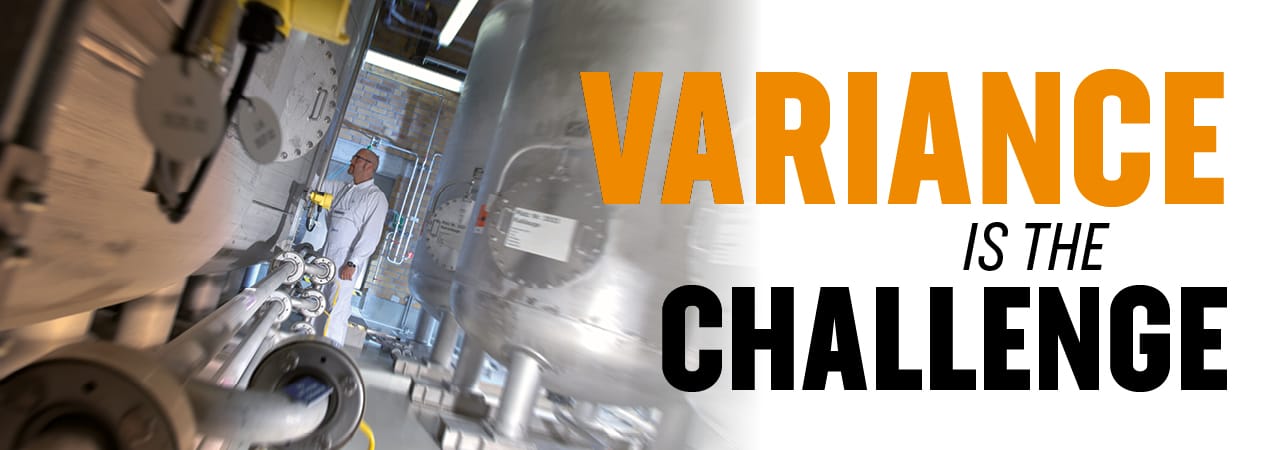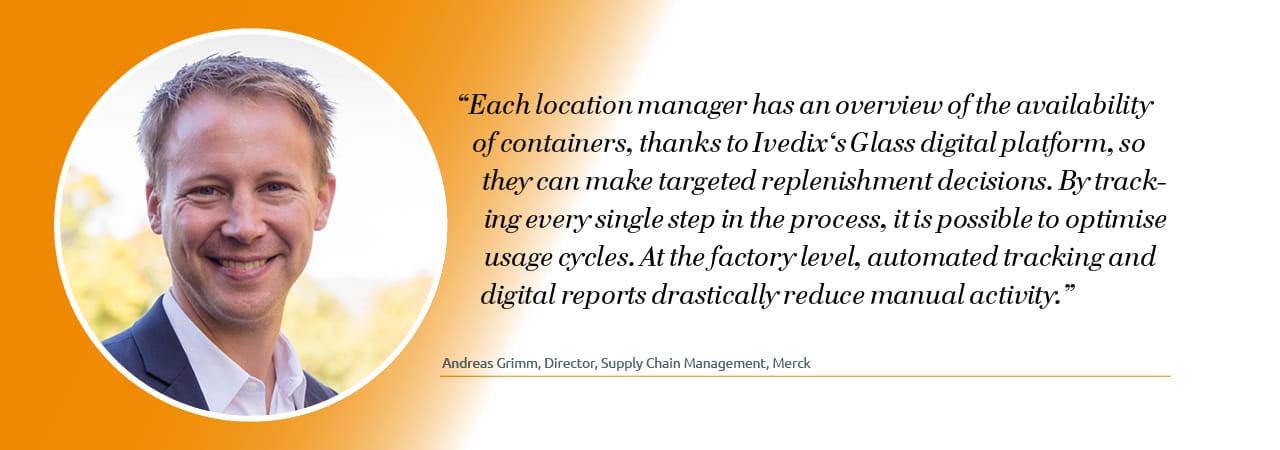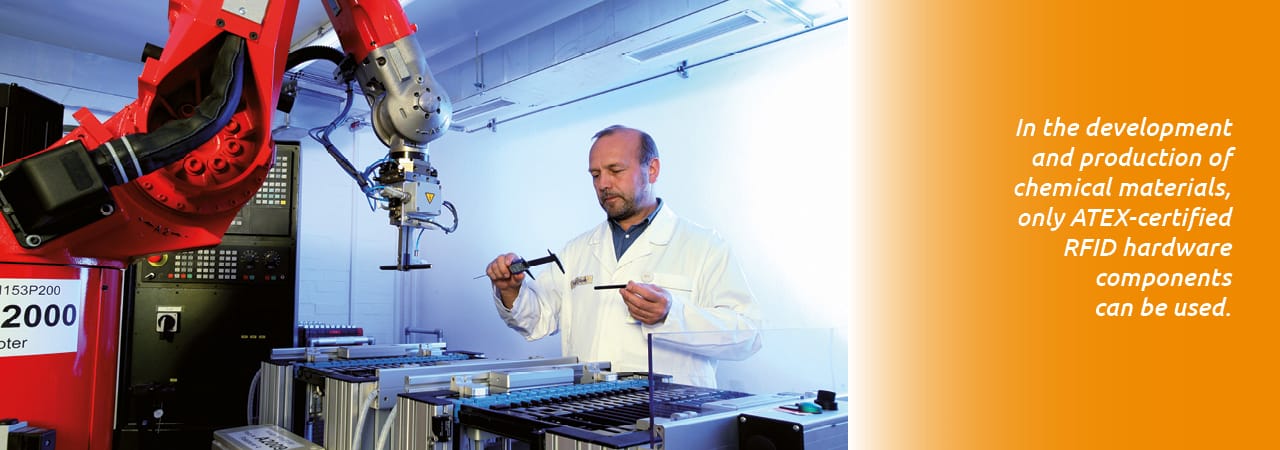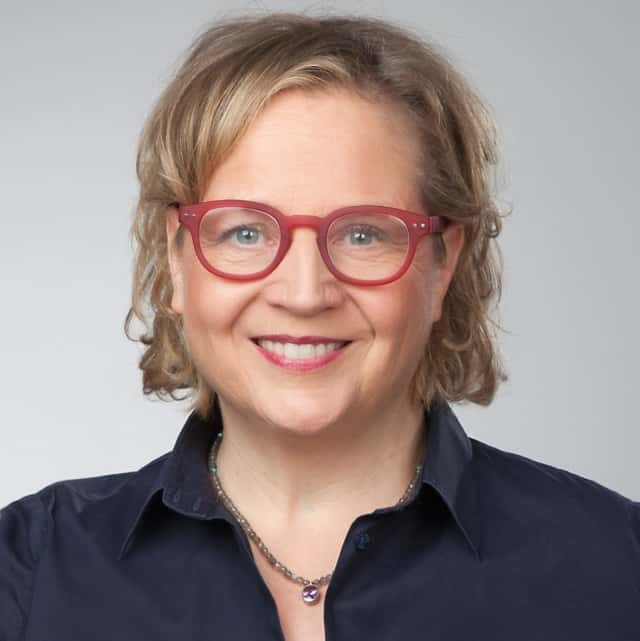With RFID, Merck is aiming for 100 percent control of special containers for Performance Materials
Merck, a global science and technology company based in Darmstadt, has set itself the goal of harmonising container management in the supply chain as part of the implementation of a new ERP system at all Performance Materials sites.
The company develops and sells products in the Healthcare, Life Science and Performance Materials segments. Regarding the supply chain, the conversion of processes at the international locations should ensure the highest possible transparency and productivity in the management of containers.
Andreas Grimm, Director, Supply Chain Management, Merck, reports on the unique features of special containers as well as the challenges of using technology for tracking in the chemical-industrial environment.
Performance Materials in many everyday products
In the area of Performance Materials, for example, Merck develops and produces liquid crystals for processing companies in the high tech sector, which are used in the production of OLED and LCD displays in televisions, notebooks, and mobile telephones, but also in the energy optimisation of glass surfaces on buildings.
Semiconductors, process chemicals, and speciality chemicals for photolithographic printing are also part of the company's product portfolio. Likewise, materials for lighting, solar energy, cosmetics, and effect pigments are produced in the Merck plants. From cars to coffee makers, the special chemicals are used in paints, for example.
Special container for special products
In the chemical industry, special containers are used for the materials produced, as Andreas Grimm reports:
"Due to the special features of the products - high sensitivity to influences during transport and storage, possible chemical reactions in the air, danger of explosion, partial production of very small quantities or samples - there are different requirements for containers than, for example, in the manufacturing industry. That's why the containers used at Merck range from GMP compliant cylindrical lid drums to so-called bubblers. These can contain only a few millilitres of chemicals and are therefore very small and have special connections that allow them to be connected during the processing process of Merck customers. The bubblers are usually tailored to the requirements of each customer's process and the particular chemical being produced."
A single one of these containers can cost up to €5,000. That is why it is important that the containers are effectively managed in order to be able to reuse them. These reusable containers must ensure that the location within the factory is known at all times and that the logistics processes between Merck and its customers are smoothly guaranteed.
Reduce variances, gain benefits
According to Andreas Grimm, identifying and reducing variances in the entire supply chain and the individual logistics processes is one of the keys to drastically reducing lead times and avoiding the unnecessary purchase of additional equipment. Within the individual steps of inbound, supply chain, outbound, and delivery to the end customer, a new RFID-based solution from Merck is deployed in the supply chain.
"Within this area, it is important to reduce supply variances and quality variances through container tracking. This also reduces the lack of transparency regarding the whereabouts of assets and containers," says Andreas Grimm.
Merck's other two divisions are already using other tracking solutions.
Tracking application in real-time communication with the ERP system
An ERP system currently in global implementation forms the basis for container management in the supply chain at Merck.The ERP solution offers all the usual functionalities of an ERP system in order to be able to design business processes.
"In addition, an interface was realised for real-time communication with the container tracking application, which records the locations of the containers. For this purpose, site-specific tracking solutions are used, which are tailored to the conditions of the respective production site," explains Andreas Grimm.
As a further optimisation step in order to make data from the tracking solutions available across locations, Merck sees integration potential in a cloud solution.
"For now, however, it is on our agenda to integrate the container tracking solution step by step optimally at all performance material production sites," says Andreas Grimm concerning the current activities.
Individual solutions combined in an IT system
The technology used at each Mercks site differs according to the needs of the existing infrastructure and processes. At the Wiesbaden location, where Merck piloted the RFID solution, bubblers were labelled with ATEX-certified special transponders.
"We are almost always in potentially explosive environments, so we have to pay attention to the appropriate approvals for all solutions that rely on electronic components in order to exclude the risk of explosion," reports Andreas Grimm.
The collection of the containers takes place via RFID gates, which automatically document the movements of the containers.
"For us, harmonisation of the tracking processes is very important to us. For example, given the requirements at the site in Kaohsiung, Taiwan, the solution is etched into the container barcodes. Accordingly, mobile barcode readers are used. Common to the individual solutions is the IT system based on a solution from Ivedix in cooperation with Omni-ID. The latter also supply the ATEX-certified special transponders. The Ivedix application also acts as interface of the container tracking application with the ERP system.”
Roll-out planned from Wiesbaden to Taiwan
The pilot project in Wiesbaden laid the foundation for the roadmap, which paves the way for nationwide implementation. The requirements were specified as part of a feasibility study for hybrid technologies consisting of passive and active tags for complex use cases with specifications according to ATEX standardization.
"The first pilot started in March 2018 to evaluate the technology before a broad, global roll-out. A second pilot will be launched soon in Hsinchu, Taiwan. The goal is to expand the solution established in Wiesbaden to locations that produce materials for semiconductor manufacturing. At four plants worldwide, an RFID-based approach will be evaluated by 2020," reports Andreas Grimm.
In a next step, additional technologies will be added. In numerous smaller use cases, active tracking technologies are to be checked for their feasibility. A conversion either via GPS or mobile is possible.
The benefits of digital container management
The advantages of a global container tracking system are obvious to Andreas Grimm.
"Each location manager has an overview of the availability of containers, thanks to Ivedix's Glass digital platform, so they can make targeted replenishment decisions. By tracking every single step in the process, it is possible to optimise usage cycles. At the factory level, automated tracking and digital reports drastically reduce manual labour. The Proview Basic functionality of Omni-ID also provides the knowledge about the movements of the containers and the process cycles," says Andreas Grimm.
Within the supply chain, Merck is thus able to reduce the inventory of containers and optimise their use. This is made possible by real-time visualisation of planning patterns, expected return times of containers, and lead times.
Merck – Innovation in the pharmaceutical industry and chemistry since 1668
The history of Merck, a company in the chemical and pharmaceutical industry which today operates globally, dates back to the Engel Pharmacy founded in Darmstadt in 1668, which is still family owned.
Today, more than 50,000 employees in 66 countries worldwide work in the areas of Healthcare, Life Science, and Performance Materials. The Performance Materials business unit focuses on the production of liquid crystals needed for LCD-based display displays.
In 2017, the company achieved a turnover of 15.3 billion euros. 47 percent of employees work in European locations. The second largest location is the Asia-Pacific region, where around 23 percent of employees are employed.






